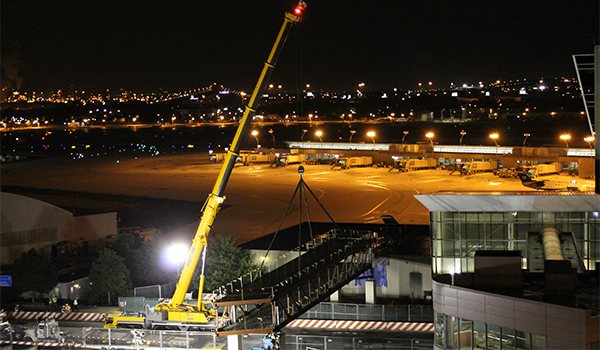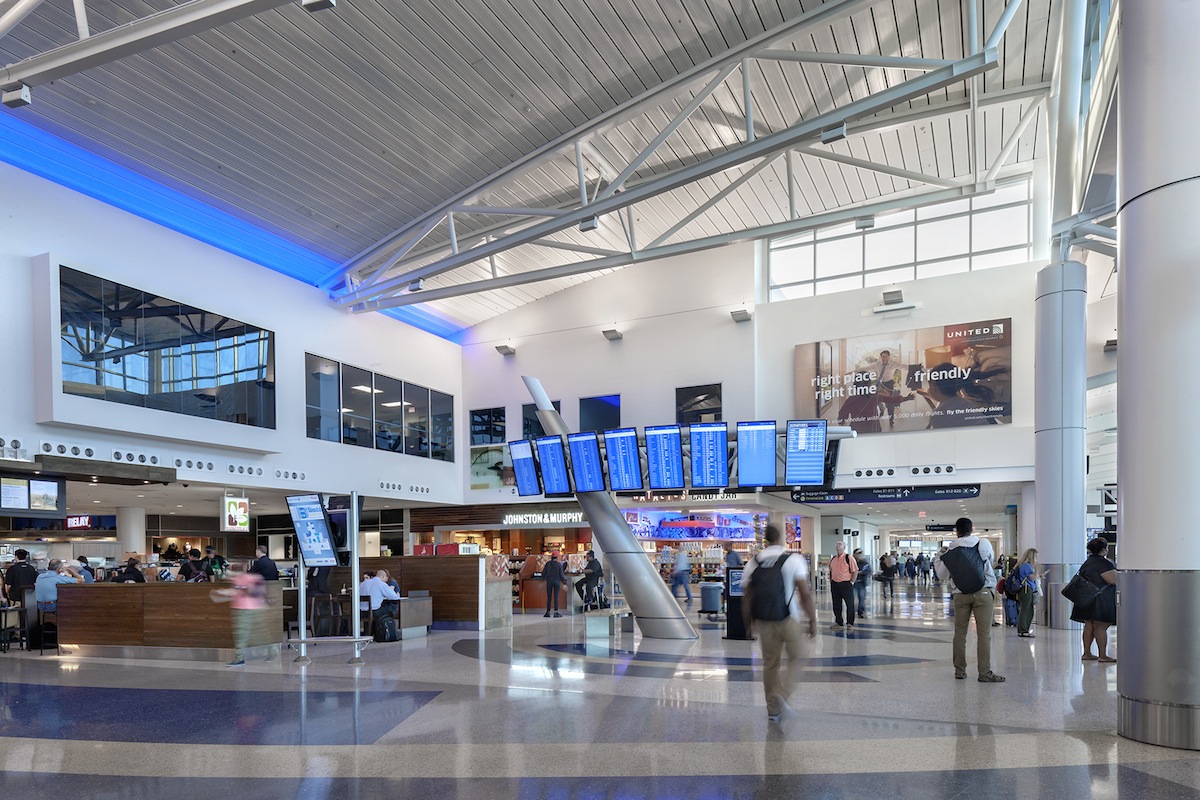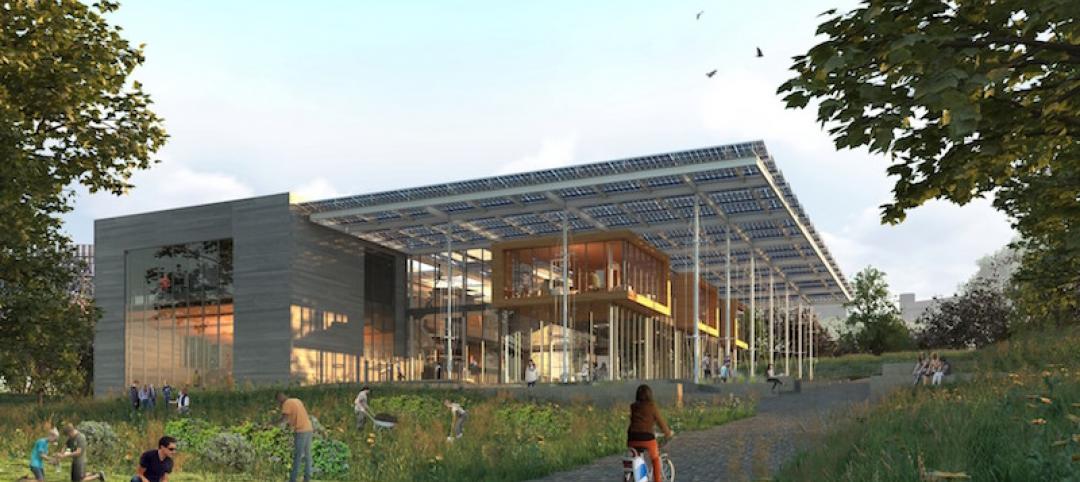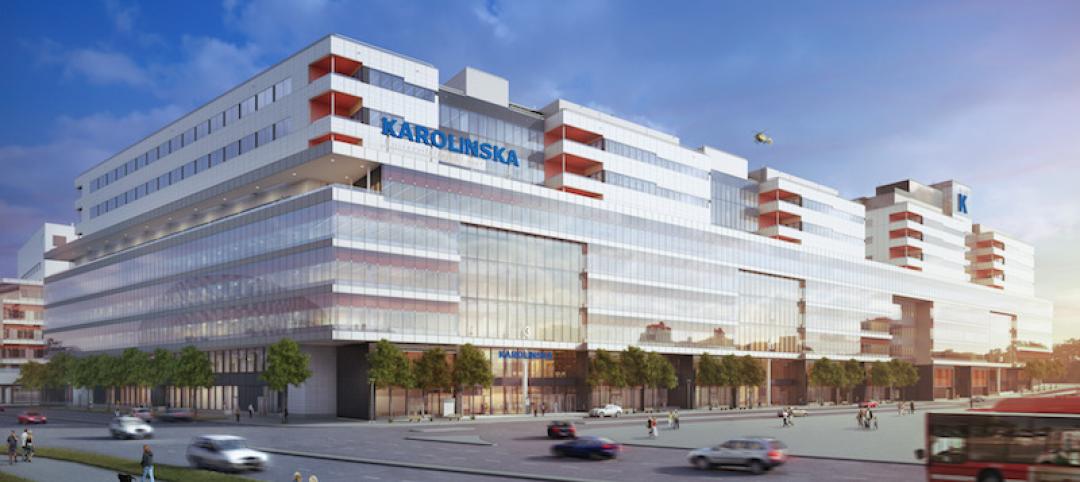American airports remain some of the busiest in the world, with nearly half of the world’s 30 busiest airports within the U.S. and domestic air travel at an all-time high of 743 million passengers taking flight in 2013. However, upgrades to aviation infrastructure have not kept pace with the increase in airport traffic or even at a level sufficient to accommodate the life cycle of our many dated terminal facilities. Until now.
While funding challenges remain (especially as a consequence of the cap on PFCs), as competition heats up between newly consolidated air carriers and as airports seek new revenue sources to upgrade or replace outdated facilities, the need for efficiency, flexibility, and improved customer experience is generating a wave of terminal projects that are transforming America’s air travel gateways.
Renovations include turning away from multiple security checkpoints and centralizing infrastructure to allow for greater scalability, and can be seen across the industry, from the smallest regional facilities to large hubs. Current estimates project that the industry will spend more than $14 billion per year between now and 2017 on airport upgrades in the U.S. That’s the good news.
The bad news is that the nature of this work requires that much of it will be highly invasive, with projects located right in the heart of the airport. Construction firms will need to work with and among airport authorities, air carriers, concessionaires, the TSA and FAA, and passengers to minimize any impacts, carefully coordinating those renovations and expansions. By aligning best practices with those needs, contractors can best support all stakeholders affected by construction work.
 Skanska USA erected a baggage conveyor bridge over a main airport road at night to avoid disturbing airport operations at Philadelphia International Airport. Image courtesy Skanska
Skanska USA erected a baggage conveyor bridge over a main airport road at night to avoid disturbing airport operations at Philadelphia International Airport. Image courtesy Skanska
For example, next generation airports are maximizing efficiencies both on and off the tarmac, which means larger aircrafts with additional seats. The fuel-efficient Boeing 737-900ERs have a 25% bigger wing area, a 16-foot longer wingspan, and 25% more seats than the Boeing 737-400s being retired. With more seats available, airports are accommodating more travelers, meaning the airport needs to be upsized.
These re-gauging renovations require careful planning in order to make the process go smoothly while existing facilities are expanded with surgical precision. Bigger planes and bigger waiting areas mean there is a need for additional amenities, from restaurants to rest rooms. Contractors must carefully communicate and coordinate with all stakeholders.
How?
• Communicate early and often, beginning with design review. Mock-ups are an important tool, allowing stakeholders to touch and feel new counters and other elements that will be installed.
• Work out the phasing. Contractors must consider how passengers use airport infrastructure, phasing a job properly or working overnight in order to minimize impacts to passengers and other stakeholders. Our team experienced this first-hand at Philadelphia International Airport, where we were tasked with erecting a baggage conveyor bridge over the main airport departure road. In order to minimize impacts to the departure roadway, we prefabricated the bridge on site and erected it in a single eight-hour pick, rather than building it piecemeal over the roadway, which would have taken longer and required frequent closures. Additionally, BIM is increasingly useful as a tool for communicating construction plans and the phasing of the work to stakeholders. By rendering the projects electronically, we can show those stakeholders more clearly where and when the work will take place.
• Safety and security is central to everything. These complex renovations often require an extensive system of temporary walls, clear wayfinding, and a rigorous badging program to keep the construction sites inside the terminal carefully insulated from nearby passengers. Coordinating with all parties prior to execution—especially the TSA—ensures timely and efficient project delivery. We have also developed tools like the inSite Monitor to enhance safety during construction. This tool remotely monitors the environmental conditions on a project, measuring noise, dust, vibration, and other environmental factors, and notifies our team immediately if conditions on the site go over acceptable levels.
The need to upgrade our outdated aviation facilities is clear, and airports and airlines are driving many of these changes in response to new customer expectations. Contractors can do their part to deliver efficient, flexible solutions that put the customer experience first and foremost. These trends in aviation construction reflect the interests of the modern traveler, which will continue to impact the way we will design and build airports.
This post originally was originally published on Aviation Pros.
About the Author: MacAdam Glinn, LEED AP, is National Aviation Director and Senior Vice President at Skanska USA Building Inc.
More from Author
Skanska | Dec 4, 2023
4 key innovations and construction trends across airport design
Here are some of the key trends Skanska is seeing in the aviation sector, from congestion solutions to sustainability.
Skanska | Jun 29, 2023
K-12 school construction: 5 ways strong community relations can lead to success
When constructing a K-12 school, building positive relationships with the community—including students, parents, school staff and residents—is critical to the success of the project. Here are five ways Skanska puts the community first when building K-12 schools in the Pacific Northwest.
Skanska | Mar 14, 2023
Skanska tests robots to keep construction sites clean
What if we could increase consistency and efficiency with housekeeping by automating this process with a robot? Introducing: Spot.
Skanska | Jan 27, 2023
Key takeaways from Autodesk University 2022
Autodesk laid out its long-term vision to drive digital collaboration through cloud-based solutions and emphasized the importance of connecting people, processes and data.
Skanska | Dec 5, 2022
5 ways sustainability professionals can help reduce construction's carbon footprint
Mark Chen, Sustainability Manager at Skanska, has found five specific ways to help the construction industry reduce its carbon footprint.
Skanska | Jul 5, 2022
Tour the new Patricia Reser Center for the Arts in Oregon
This month, the community of Beaverton, Oregon, welcomed a new haven for artistic expression with the opening of Patricia Reser Center for the Arts (The Reser).
Skanska | Jun 22, 2018
What owners should know before choosing the design-build project delivery method
Outside of drawing up a well-written contract, owners often overlook a key attribute that can significantly impact the success of a design-build project, writes Skanska’s Julie Hyson.
Skanska | Dec 7, 2017
Busting the myths: What the “S-word” can mean for construction and development
Sustainability, it’s a trendy term. The problem, however, is that it’s being used in so many different ways that people don’t even know what it means anymore.
Skanska | Aug 15, 2016
Future proofing hospitals
By improving the physical layout of hospitals and medical facilities, we can enhance and increase safety mechanisms, improve care, and help reduce the exposure to medical errors, writes Skanska USA's Andrew Quirk.
Skanska | May 6, 2016
Infographic: The greening of healthcare
By adopting green building and sustainable practices, healthcare facilities can save $15 billion over 10 years. Skanska's infographic spells it all out.















